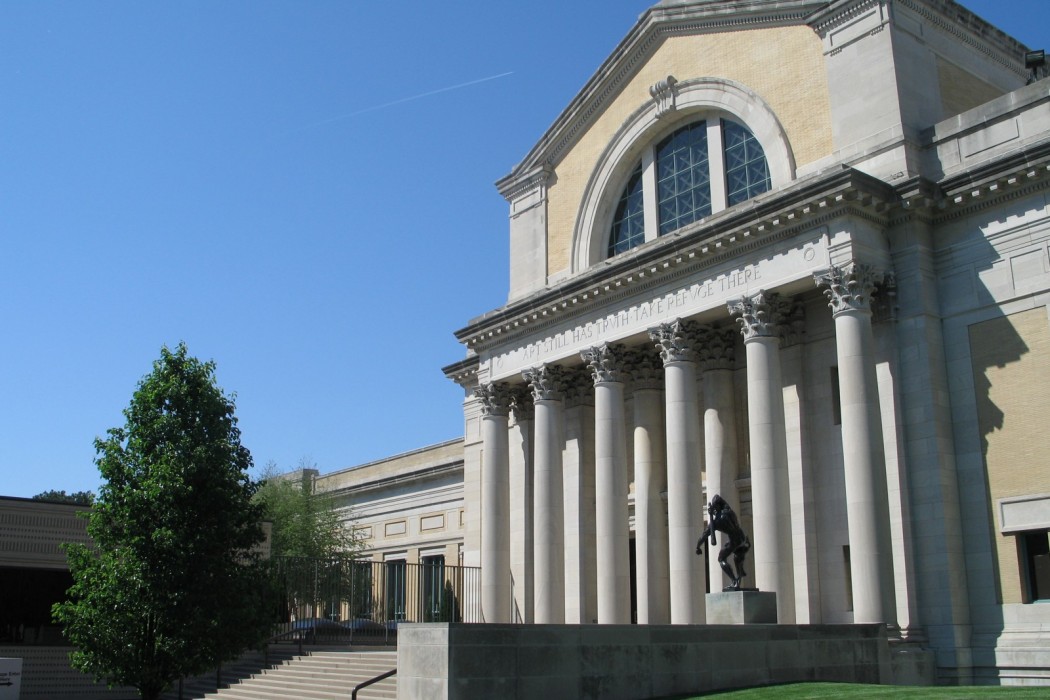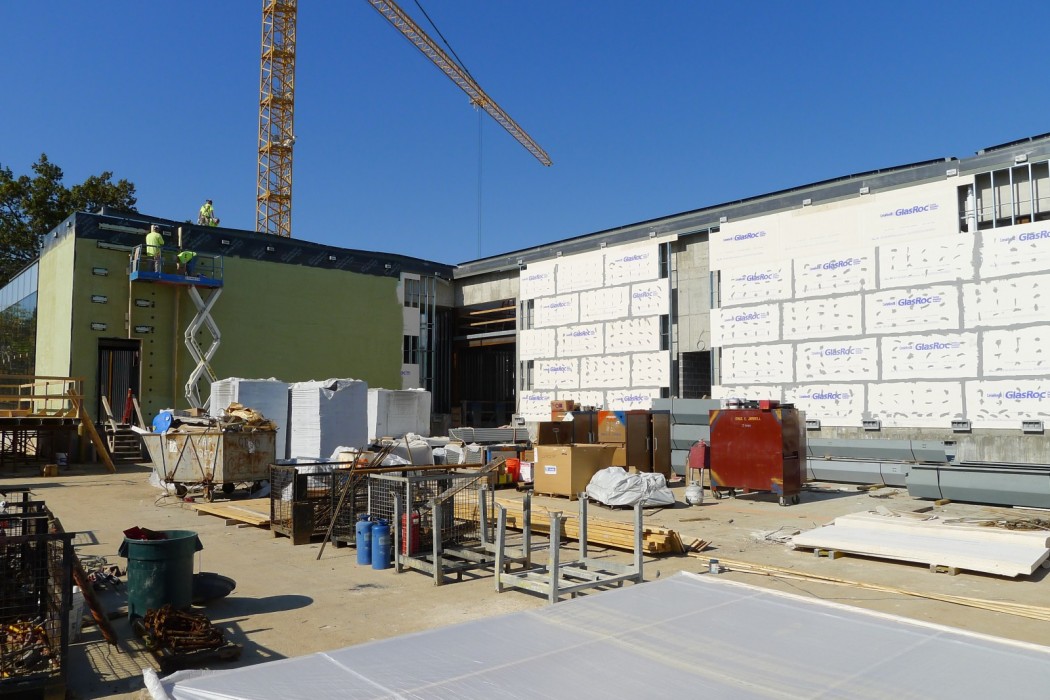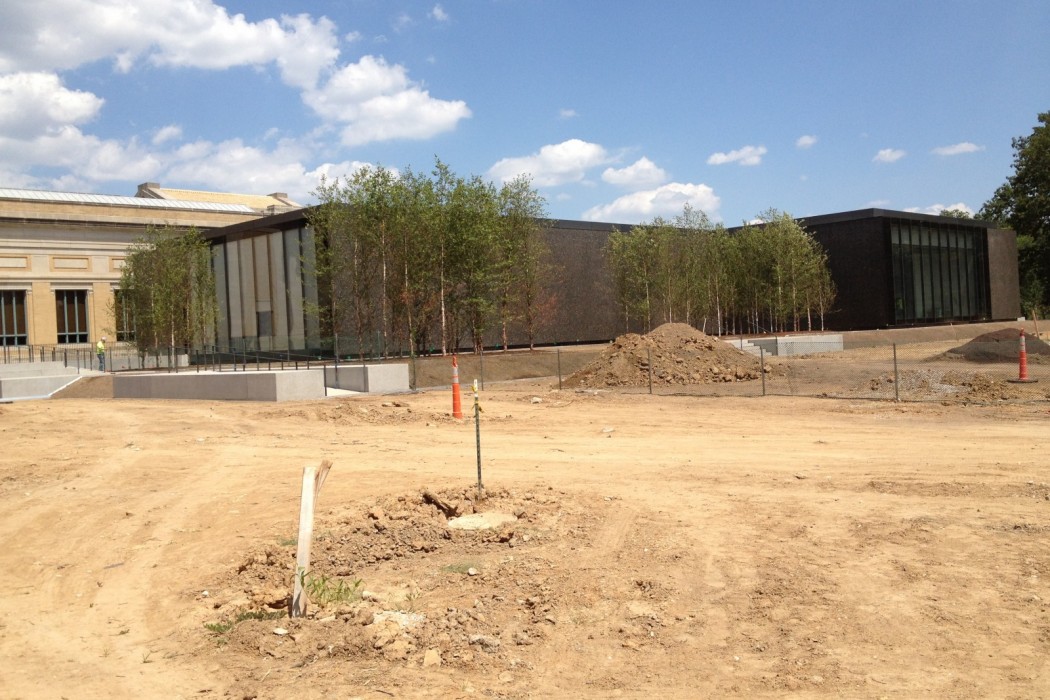WJE PROJECTS
Saint Louis Art Museum
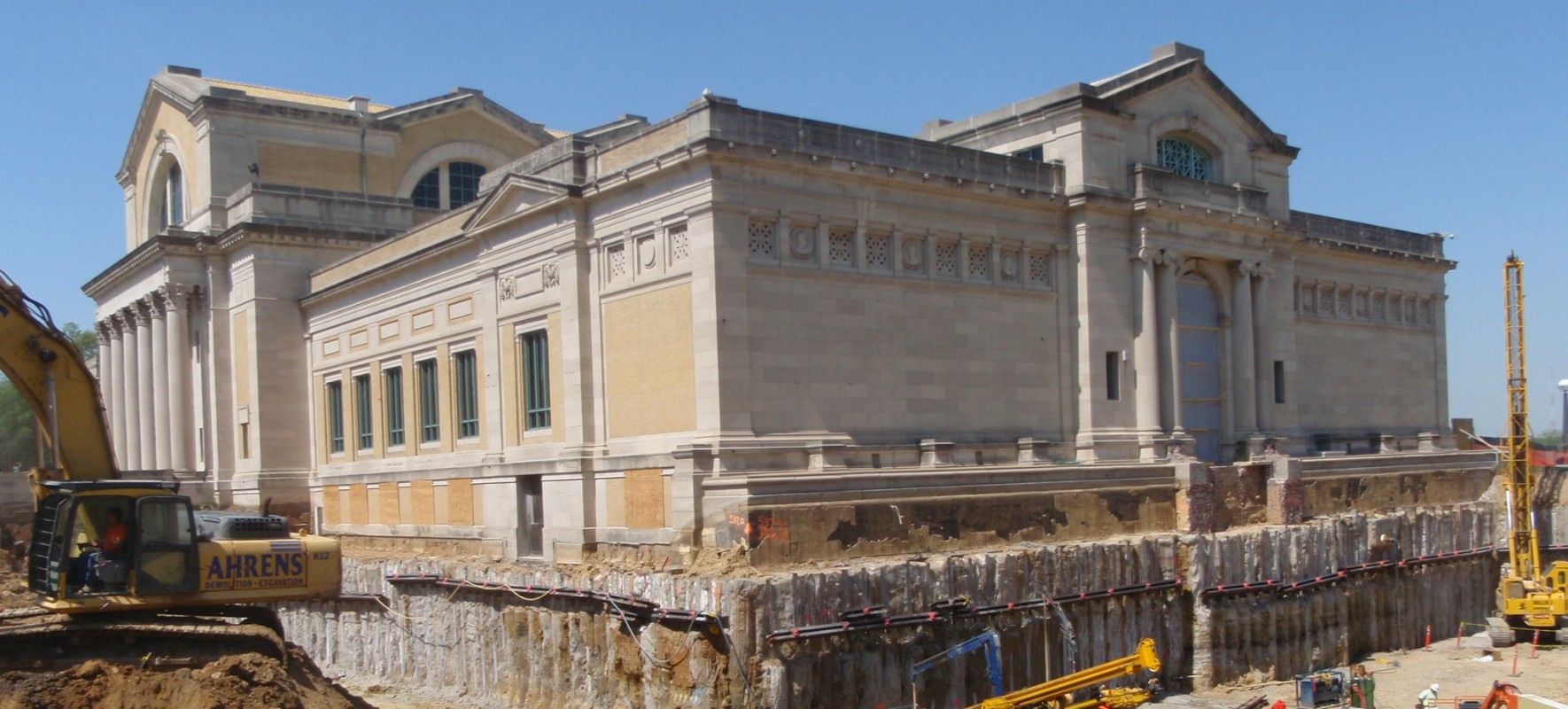

CLIENT |
HOK Architects/Saint Louis Art Museum |
LOCATION |
St. Louis, MO |
Vibration Control Services and Air Barrier Consulting
WJE was retained during the design development phase to provide preconstruction vibration control services. WJE performed extensive preconstruction vibration testing and analysis, advised the museum on plans for artwork movement, and developed the vibration control specification for the project. WJE was also retained to monitor vibrations in the museum during construction as well as peer review enclosure design and construction documents; commission the wall air barrier system; and attend testing, including whole building airtightness testing.
BACKGROUND
The Saint Louis Art Museum campus is composed of the original Cass Gilbert Building, a predominantly masonry structure constructed for the World's Fair in 1904, and surrounding additions constructed between 1957 and 1985. In 2007, a large museum expansion, designed by London architect David Chipperfield in collaboration with HOK Architects, broke ground to add approximately 95,000 square feet of new building space. Plans for the new four-level East Building, to be constructed next to the Cass Gilbert building, included three below-grade levels primarily for parking and one above-grade level for galleries. The project also included a below-grade circulation corridor and new loading dock.
SOLUTION
The primary objectives were to measure, by field testing, the vibration attenuation characteristics of the site and buildings; estimate from the test data the degree to which the planned construction activities would transmit vibrations into the buildings; assist the museum with preparations to safeguard the buildings and their contents; and develop a project-specific vibration control specification to be incorporated into the contract documents for the expansion.
At the start of construction, WJE conducted vibration trials to verify vibration levels caused by actual equipment. During construction, WJE monitored vibrations using as many as twenty-two remotely accessed seismographs, which collected data continuously and sent immediate notifications of any above-limit vibration events.
At the architect’s request, WJE provided several recommended specification sections, including air barrier quality control, airtightness specifications, enclosure commissioning, and under-floor air distribution system airtightness and testing. The various interfaces of old and new construction also necessitated close attention to the performance of the building enclosure. Thus, during construction, WJE was asked to provide services to observe the continuity of the air barrier system joints, junctures, and transitions between various materials and assemblies.
RELATED INFORMATION
-
 We utilize experienced professionals and state-of-the-art modeling and analysis techniques to... MORE >Services | Building Enclosure Testing
We utilize experienced professionals and state-of-the-art modeling and analysis techniques to... MORE >Services | Building Enclosure Testing -
 Clients turn to us when they need a firm that fully understands the aesthetic and functional... MORE >Services | Building Enclosures
Clients turn to us when they need a firm that fully understands the aesthetic and functional... MORE >Services | Building Enclosures -
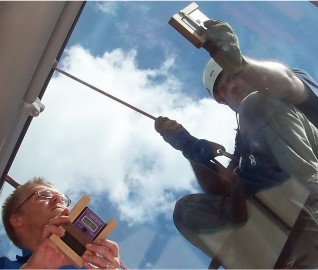 Our building science expertise and resources are the result of a commitment to understanding the... MORE >Services | Building Science
Our building science expertise and resources are the result of a commitment to understanding the... MORE >Services | Building Science -
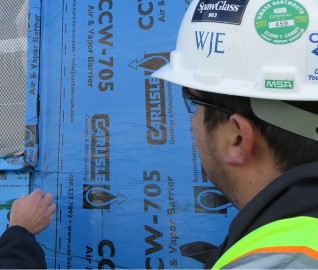 Our independent design review secures a superior level of quality control as well as the... MORE >Services | Design Review
Our independent design review secures a superior level of quality control as well as the... MORE >Services | Design Review



































